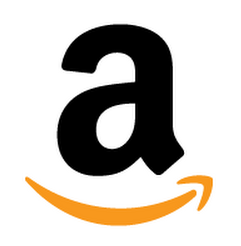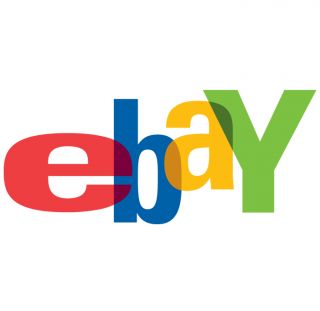
How We Started A $400K/Month Business Selling Seeds And Growing Supplies
Hello! Who are you and what business did you start?
I’m Parker Garlitz, one of the Co-Founders of True Leaf Market. We are an independent seed company offering heirloom, non-GMO and organic seeds. We also offer growing supplies and starter kits. We sell to home gardeners up to professional growers. We offer traditional vegetable garden, flower and herb seeds as well as specialty seeds like microgreens, sprouts, and wheatgrass. The other Co-Founders are Lance Heaton, Kaitlin Jones & Robb Baumann.

What's your backstory and how did you come up with the idea?
Our history is a little complicated because True Leaf Market as a business is the culmination of several businesses that all came together. There are various threads that weave together. I’ll start with my thread first.
In 2000, my sister Kaitlin had graduated from High School and was preparing for college. At the time I ran a small business repairing laser printers and selling printer supplies. I had started that business in 1990 serving my local area but soon discovered the Internet as a way to reach a wider market. I listed a refurbished NeXT Laser Printer on the UseNet in 1995 and ended up selling it to someone in Portugal. In 1995, that was just completely crazy to me. I was hooked and got obsessed with marketing online and by 2000 was doing much more revenue online than I was doing with the original local business. Bottom line is, I spent years in front of a computer learning how to market online by simple trial and error.
Kaitlin approached me about helping her start an online business in order to pay her way through college. We brainstormed and decided to focus on something she was passionate about. Kaitlin is a vegan and was getting into growing and juicing wheatgrass. We decided to partner up and sell wheatgrass growing kits and juicers online. We started in my garage. She would run the business day-to-day, and I would handle the online presence and marketing. We founded Living Whole Foods, Inc., and launched our first website.
At the time, I thought the business was so niche, that the best we could hope for was maybe $5,000 per month in revenue, which I figured would be sufficient to get Kaitlin through school, much better than a part-time job. We started in August of 2000, and by December were doing well over the hoped-for $5K / month. The market was larger than I thought. We began expanding our product line into other “grow your own” type products. We created a line of indoor herb garden kits, sprouting kits and expanded our line of juicers, wheatgrass supplements, and other items. We originally offered only inexpensive hand-crank juicers but expanded into the electric juicers. By 2004 the business had grown to the point where it passed up my old printer supply business, with much better margins. I sold off my printer company and focused on our wheatgrass business.
In 2006, we had the opportunity to acquire a competitor, Handy Pantry. Handy Pantry was a small sprouting seed company that started in 1974, and had a very small online presence but were selling mainly through brick and mortar health food stores. We were somewhat confident we could grow their brick and mortar channel but were totally confident we could skyrocket their online sales. With that acquisition, we had a well-rounded product offering at somewhere over 1000 total SKUs, which were a mix of our brand products, and other brands we were reselling (mostly electric juicer). In 2009 we built our own warehouse and moved in and continued to grow up until 2014.
Now, let’s skip over to a different thread: In 2009 two college friends decided to look for a lifestyle business to purchase. Lance Heaton had spent the last 20 years as an entrepreneur, buying, running and selling small businesses. Robb Baumann had gone to work for a public company initially doing M&A work for them, and subsequently working on business process optimization for the companies he helped to acquire. Robb was spending far too much time on the road and contacted Lance with the idea of partnering and finding a lifestyle business to purchase.
Data hygiene is absolutely vital to being able to scale a business, especially one with as many SKUs as we have.
They ended up buying Mountain Valley Seed Company in 2010 from the original founder who was looking to retire. The original founder was Demetrios “Dimo” Agathangelides, who founded the company in 1974 (coincidentally the same year as Handy Pantry was originally founded).
Dimo had started Mountain Valley Seeds in his kitchen as catalog, mail-order seed company, and grew the company to about $80K / month by the time that Lance & Robb acquired it. As it turns out, Mountain Valley Seed was a key supplier for Living Whole Foods. Soon after the acquisition, Robb and Lance came to visit Kaitlin and me to see how we might work more closely together. That began a process that ultimately culminated in the merger of MVSC and LWF in August of 2014.
We formed a new company True Leaf Market and maintained Handy Pantry and Mountain Valley Seeds as brands along with with half a dozen other brands we owned. We sold our two small, separate warehouses and bought a 75,000 sq. ft. warehouse in Salt Lake City. So while True Leaf Market was technically founded in 2014, our two biggest brands have roots back to 1974.
Take us through the process of designing, prototyping, and manufacturing your first product.
In the early days of our product launch, the process was a pretty shotgun. Our original wheatgrass kit was designed by Kaitlin, along with the step by step instructions. I did the (very sub-par) original photography. As it was an online / mail-order product, we did not have retail packaging and shipped the kit contents in a regular brown cardboard box.
Today, product development is much more streamlined with a dozen people working on aspects of it from sourcing and prototyping, to copywriting to photography, to packaging design, etc. Most of our products are very straight forward to new seed varieties. For example, if we want to onboard White Habanero Hot Pepper seeds, which are currently in the onboarding queue, those types of seed products go into a fairly well-developed onboarding process. We source seeds from reputable growers, send the seed for testing, sometimes do trials depending on circumstances and do photography and create size variations, etc… Simple seed products can be on-boarded fairly quickly, and we average 50 to 100 new SKUs per month in product development.

Describe the process of launching the business.
Originally when Kaitlin and I started Living Whole Foods in my garage back in 2000, we bootstrapped the business with $100 in cash to open a bank account, and the rest of the startup funding was with a credit card.
When Living Whole Foods and Mountain Valley Seeds came together, we had some significant challenges to overcome. We had completely different systems for purchasing, accounting, warehouse and order management, etc. We also had data in very different formats. MVS did not have as extensive an online presence as LWF, so their 3000+ SKUs needed massive amounts of copywriting, data scrubbing, product photography, UPCs, etc… We had a collection of something like 13 different websites, and we had a significant chunk of our revenues that were unreliable and/or low margin. MVS had some cyclical product lines that sold well during demand spikes but otherwise sold very poorly. LWF’s line of juicers was low margin and increasingly difficult to sell due to online competition.
We made the decision to trim unreliable and low margin SKUs from our offerings and focus only on products that we made under our own brands. We also made the very scary decision to consolidate all our eCommerce websites into a single site: trueleafmarket.
From 2014 to 2016 we struggled as we focused on consolidating websites, scrubbing data, getting everything operating on the same systems, etc.. During this period, sales were declining from our unreliable product lines, while sales on our core brands; seeds, supplies, and kits, were growing. But they weren’t growing fast enough to replace the lost revenue. The net effect is revenue was declining overall, but... margins were improving. We were investing heavily in fixing our challenges and were losing money along the way. As our business is affected by seasonality, the fall of 2016 was especially challenging.
By December of 2016 however, everything had finally begun to come together and we started to turn around and operate the way we had originally envisioned when we merged. We were expanding our core product lines, we were operating much more efficiently and improving daily, margins were improving, and we finally had a single online identity that we could focus on growing. December 2016 was profitable and we have been ever since.

Since launch, what has worked to attract and retain customers?
We finally got our websites and online identity consolidated in December of 2016. At that time we were still producing and mailing out a print catalog to our snail mail list. 2020 will be the first year that we don’t do a print catalog. We are now marketed 100% digitally, online.
We advertise online using paid advertising primarily through Google, Bing, Facebook & Instagram, affiliates, influencers, and email. We are doing more social media marketing, influencer marketing, and video marketing these days, compared to years past. We don’t use agencies. With apologies to the agencies out there, I’m convinced that the web marketing agency model is fundamentally flawed and might only be marginally successful for companies who are established and are looking to add an online component to their existing business. And even then, the agency will only take an online effort so far.
In our case, web marketing is far too critical to outsource. We do 100% of our marketing in house. We design, build and manage our website, we manage all the paid ads, we recruit influencers, we do our own media outreach, our own photography, our own packaging design, and graphic art, etc… At the end of the day, no agency out there will shepherd our resources with the care we will, and no agency out there will ever understand our market and products as we do.
Make sure your revenue channels are diverse. If all 3rd Party Channels together (Amazon, Walmart, et. al) represented more than 20% of our total revenue, I wouldn’t sleep a wink at night.
Philosophically, we rely on a healthy Cost Per Acquisition from our paid marketing efforts to acquire new customers. We don’t rely on any organic SEO or social media efforts at all in our projections. We do very little in the way of SEO and link building, opting instead of focusing on good, unique content creation and making our website as fast and user-friendly as possible.
We obsessively focus on improving our website conversion rates. We do organic social media posts but don’t rely on them to drive business. While we do get some new customers from our organic efforts, we run the business as if we would never get organically referred traffic, and would need to be profitable based exclusively on our paid advertising. Any organic referrals are a bonus.
Another key issue for us is customer satisfaction. Modern eCommerce has blurred the lines between operations and marketing. I.e. our ability to acquire and retain customers has just as much to do with outstanding operations (which lead to good online reviews and customer retention) as it does with smart, experience-driven online marketing. For us, it’s not about the first order with a new customer, it’s about the 2nd order.
We work very hard to make sure we have premium quality seeds and products, ship orders out quickly (same day for most orders), and have clear policies for shipping, returns, etc… We want every customer to have a world-class experience with us, end to end; from a user-friendly website to competitive pricing, to fast delivery, to great products, to a great customer service experience. We try to make the whole process run so smoothly that most of our customers won’t ever have the need to contact us to resolve problems. In the event that a customer does have an issue, we try as hard as we can to surprise that customer with how quickly and cheerfully we resolve the issue for them.
Our real growth comes from keeping customers coming back again and again.
How are you doing today and what does the future look like?
We are doing about $400k/month on average on our website and are growing at about 20% annually. We are profitable and margins are improving along the way as we continue cleaning up underperforming SKUs. Revenue is diversified with most coming from our website. We have additional revenue channels from 3rd party online sellers, Amazon, eBay, et. al.
We are still selling the Handy Pantry line and now many additional products through our wholesale channel to brick and mortar health food stores. We also have a decent amount of revenue from fulfillment services we offer, white labeling for large customers. Seed packets, kitting and assembly, etc…
We add between 50 and 100 new SKUs per month and that is a key part of our growth strategy. In 2019 we acquired a couple of small competitors and plan to continue to feel part of our growth through acquisitions in the future.
Through starting the business, have you learned anything particularly helpful or advantageous?
If there is one clear lesson that we learned in the process of merging and turning the business around, it is that data hygiene is absolutely vital to being able to scale a business, especially one with as many SKUs as we have. The poor quality and multiple formats of our data was a huge impediment to us in every way imaginable. It took literally two years of manual data scrubbing to get to a point where we could begin to grow and improve in meaningful ways. Many of our processes and policies center on improving and maintaining data hygiene.
Another thing that has become crystal clear is the importance of owning and controlling your own brand(s). Back in the good old days of eCommerce (1998 to about 2012), you could build a business online by reselling other brands.
Amazon and online competition, in general, have squeezed margins to the point that it is incredibly difficult to resell other brands. Today, we almost never onboard any products that aren’t our brand. There has to be an incredibly compelling reason to do it, and they're rarely ever is. If we can’t sell it under our own brand, it’s not really a consideration. While we still sell a small selection of products under brands we don’t own, they are only a remnant. We have discontinued hundreds and hundreds of SKUs of brands we don’t own.
What platform/tools do you use for your business?
Our site is hosted on Shopify. We use Yotpo for reviews, Active Campaign for email automation, Pepperjam for affiliates, Reamaze for unified customer service and Smile.io for our loyalty program. We use Google and Shopify for analytics.
Our ERP system is our own in-house, proprietary platform, and we use Quickbooks for accounting.
We also sell through 3rd party platforms like Amazon, eBay, etc., but most of our revenue comes directly through our own website.
What have been the most influential books, podcasts, or other resources?
Personally, I'm not a huge fan of business books. But if pressed, I’d say the most influential are: The E-Myth by Michael Gerber, Double Your Profits in 6 Months or Less by Bob Fifer, and The Goal: A Process of Ongoing Improvement by Goldratt and Cox.
Probably the unifying thread between those three is the idea of efficiency through processes and systems.
Advice for other entrepreneurs who want to get started or are just starting out?
The absolutely most important recommendation I would give is to make sure your revenue channels are diverse. If I had a nickel for every person I personally know who was “killing it” selling on Amazon, and are now out of business… I’d have fifty cents. Amazon is easy to get started but is increasingly competitive, and every day that goes by, Amazon finds new and creative ways to claw back a larger and larger share of the margin on every sale. If all 3rd Party Channels together (Amazon, Walmart, et. al) represented more than 20% of our total revenue, I wouldn’t sleep a wink at night.
Are you looking to hire for certain positions right now?
Right now we are looking for a good machine automation and maintenance person.
Where can we go to learn more?

Download the report and join our email newsletter packed with business ideas and money-making opportunities, backed by real-life case studies.

Download the report and join our email newsletter packed with business ideas and money-making opportunities, backed by real-life case studies.

Download the report and join our email newsletter packed with business ideas and money-making opportunities, backed by real-life case studies.

Download the report and join our email newsletter packed with business ideas and money-making opportunities, backed by real-life case studies.

Download the report and join our email newsletter packed with business ideas and money-making opportunities, backed by real-life case studies.

Download the report and join our email newsletter packed with business ideas and money-making opportunities, backed by real-life case studies.

Download the report and join our email newsletter packed with business ideas and money-making opportunities, backed by real-life case studies.

Download the report and join our email newsletter packed with business ideas and money-making opportunities, backed by real-life case studies.



















































